Facade of the house: what is it, types and design options

The desire to update the facade of their home sooner or later appears in every home owner. It is not difficult to do this - the range of finishing materials presented on the construction market is quite wide. However, this variety of materials has become a problem - the choice is so great that it is rather problematic to stop at one of them.
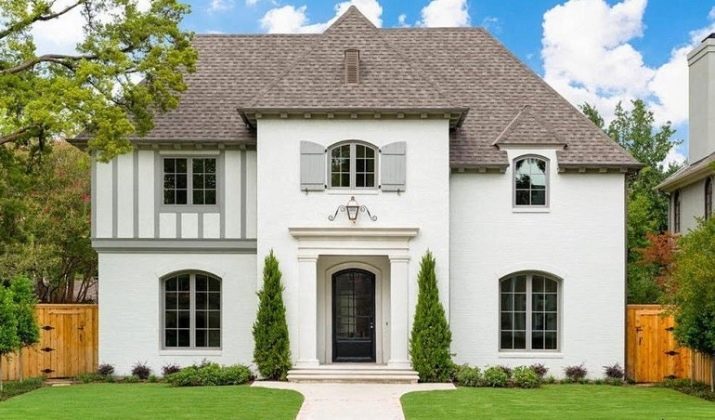


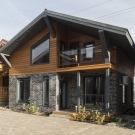
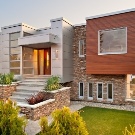
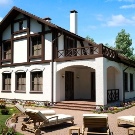
What it is?
The very concept of "facade" comes from the Italian word "faccia", which translates as "face". The facade of the house is its external walls, decorated with decorative finishing elements and faced with a stylish coating. The concept of "exterior" is considered a synonym for this term. The very first man-made structures were carelessly covered with large skins of wild animals - a similar "facade material" appeared in the Paleolithic era. However, after a while - in the Mesolithic, houses began to be faced with clay.
A serious rise of the architectural idea falls on the times of antiquity, then the buildings became clearer, and the architecture more refined and orderly. All the stylistic techniques that were widely used in that era were later embodied in the architecture of the Baroque, Rococo and early Classicism.
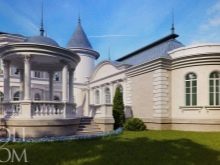

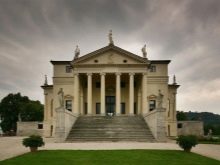
It was then that columns with exquisite capitals, complex stucco bas-reliefs, all kinds of friezes and graceful vignettes were invented, which are now universally repeated by architects using more technologically advanced materials.
The greatest splash of facade decor reached during the Baroque period. The external exterior was then characterized by complexity and intricacy, any barriers had many small details, and the buildings themselves had rounded shapes. Medieval Gothic also brought quite interesting architectural solutions - the decor was very complex, but overwhelming, and the buildings themselves rushed up to show the baseness of a common man in the face of the Lord.
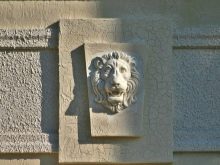
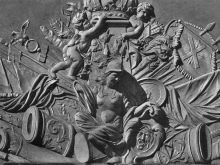
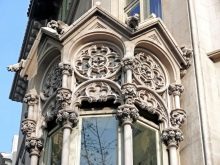
At the beginning of the 19th century, antiquity was replaced by modern solutions. The facades became much simpler, but nevertheless, they were decorated with original design elements - floral patterns, multi-colored stained-glass windows and intricate configurations.
All later directions of architecture were more inclined towards laconic facades and restraint.
Modern buildings are more and more often finished in minimalist decor (high-tech or loft), they are accentuated on a smooth, even surface without any decorative elements. Contemporary designs have clear geometry and simple materials such as siding, composite panels and energy-saving wall-sized bags.
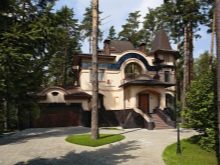
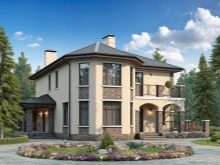
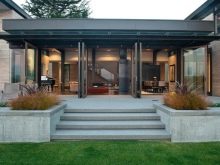
Peculiarities
The exterior of the building solves a number of tasks:
- allows air to circulate freely, thanks to which the building "breathes", all excess moisture is removed from the inside;
- protects the building from rain and snow entering the interior;
- provides good heat and sound insulation;
- contributes to the formation of a healthy microclimate in the room, keeps the room warm in winter and cool in summer;
- forms the image of the house, emphasizes the style and architectural solution of the building.
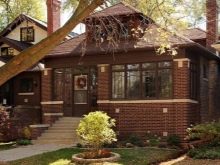
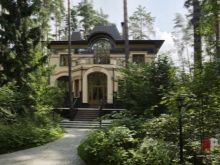
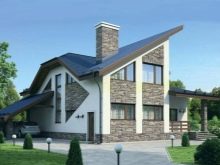
It is necessary to understand that any facade carries a great functional load.Therefore, work on its redevelopment should be carried out with great care, so as not to violate the strength and integrity of the floors and reduce the likelihood of emergencies.
When cladding the walls of a building, it is extremely important to observe all technical and engineering features, since any, even a slight error, entails an uneven redistribution of pressure and can lead to deformation of the structure and its further destruction. Another feature of the facades is that they are not eternal, no matter how much we want.
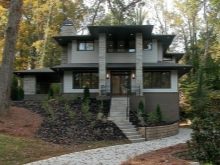
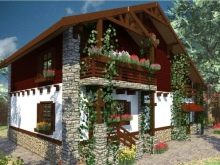

When purchasing an old house that is more than 20 years old, you should check the condition of the exterior finish. Any building is usually designed for 30 years of use, but since the demand for real estate is growing much faster than it is being built, buildings are used for much longer.
Not every private house can endure half a century of exploitation. without prejudice to its appearance and functionality of individual elements. That is why the facade has to be periodically repaired, even if it was built from expensive high quality materials. This issue should not be neglected, since not only the appearance of the house, but also the strength of its other elements depends on the integrity of the exterior.
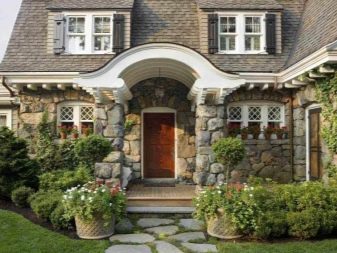

Varieties
Depending on the location, the following types of facades are distinguished:
- main;
- side;
- rear;
- street;
- yard.
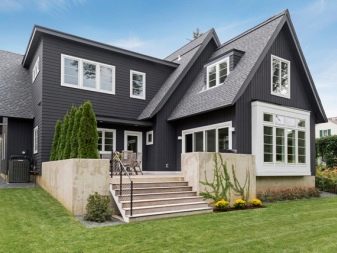

The greatest attention is paid to the front exterior, since it is this part of the house that guests see first and it is from it that they largely form the impression of the owners of the house.
Depending on the design features, facades can also have their own technical features:
- they can be with masonry or brickwork;
- the base is concrete or monolithic;
- there are facades with a translucent base.
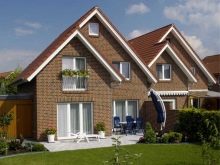
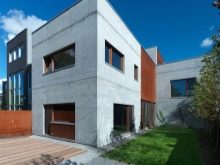
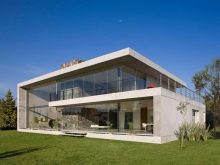
Suspended and ventilated options can have a wide variety of finishes. In most cases, siding is used, as well as other types of panels; fiber cement, porcelain stoneware or putty is also in demand.
The most fashionable and technologically advanced exterior is the media facade. This design is a combination of a large number of screens, making the whole building look like one huge screen. It is very aesthetically pleasing, stylish and ultra-modern. We should also dwell on ventilated and non-ventilated facades.
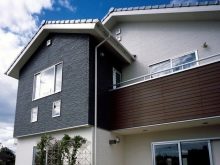
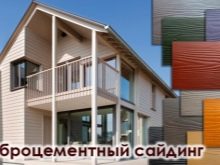
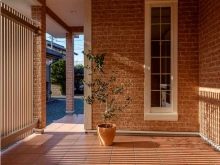
The first involves the formation of a small ventilation gap between the wall and the facing material. It is equipped immediately above the vapor barrier layer. This option allows you to protect the house from premature destruction, since air circulation allows you to remove excess moisture and dampness that appear as a result of condensation processes outside. At the same time, an aesthetic finish coat decorates the house and protects the walls from the adverse effects of external atmospheric factors.
Non-ventilated systems are used in cases where the necessary heating system is not available. Most often, in this case, clinker bricks are used. This option is unacceptable for timber houses, since wood is a breathable material and its cladding must be appropriate.
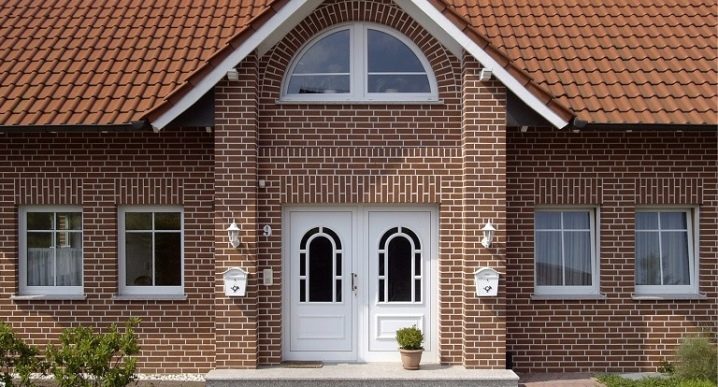
If you install the facade without a gap for free ventilation, then after a fairly short time the walls will begin to rot and collapse.
In architecture, there is also such a concept as a "wet facade" - this is a type of exterior, for the creation of which building mixtures are used, therefore they are tiled, plastered or faced with stone. But "dry facades" imply arrangement with the use of a frame type of installation and a system of fasteners. These include various options for finishing with fiber cement and PVC panels, as well as siding, clapboard and block house.
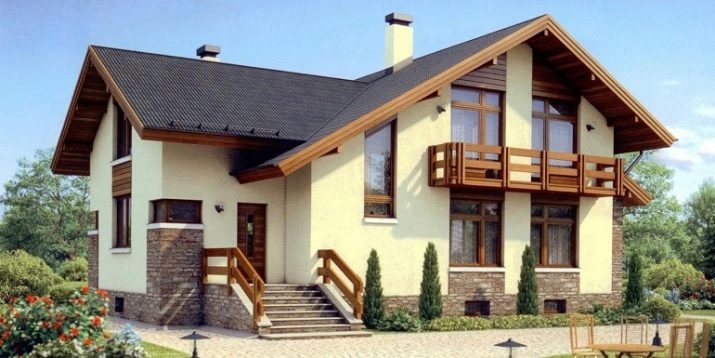
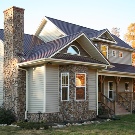
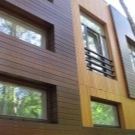
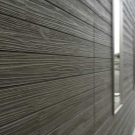
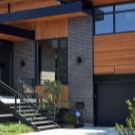
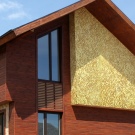
Finishing materials
When choosing a material for facade cladding, the basic criteria are considered to be practicality, reliability, attractive appearance and affordability.
You should not dwell on the cheapest option - often such savings are at the expense of the quality of materials. It is important to remember that any cladding is not only beauty and style, it is, first of all, the protection of walls. That is why the material used for finishing must be resistant to humidity, temperature extremes, frost and heat, acid-base solutions and direct UV radiation. Not every coating can withstand too high or, conversely, low temperatures in individual regions. Therefore, first of all, you need to select a material that will be resistant and durable in a specific climatic zone.
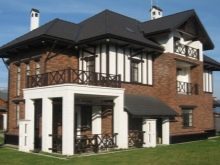
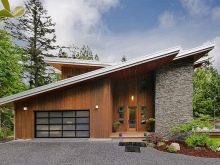
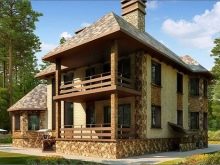
It will not be possible to design the facade completely on a budget, but it is quite possible to choose the optimal cladding option with good physical and technical parameters so that it has a relatively low price. The selection parameters that you need to rely on can not only help reduce the cost of purchasing materials, but also clearly identify the pros and cons inherent in different types of facade finishes.
Experts recommend making a small walking tour of the neighboring streets and paying attention to the condition of the facades of houses that have “wintered” for at least 2-3 years. Probably, this is what will help you finally decide on the finishing option, or vice versa, completely abandon the use of some options. It's always better to learn from someone else's mistakes!

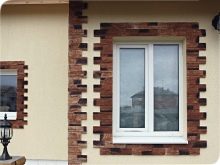
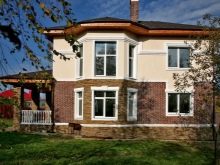
The first thing you pay attention to when choosing a material is the external effect. Here, each home owner relies only on his own taste, but the main operational requirements should be given increased attention.
The key ones for the exterior are:
- combustion resistance;
- the strength and strength of the cladding;
- tendency to fade;
- ability to withstand high and low temperatures;
- manufacturability of installation, availability of components;
- Cost of materials.
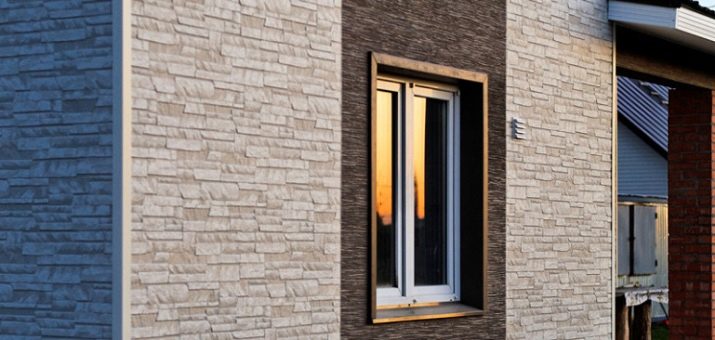
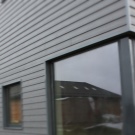
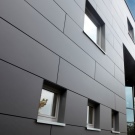

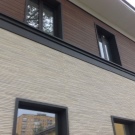
Facade cassettes
A modern and practical material that is used for the arrangement of ventilated facades, finished with galvanized steel with a particularly durable polymer coating.
Manufacturers produce cassettes in a wide range of colors. It is a practical and durable material with a simple and straightforward installation technique.
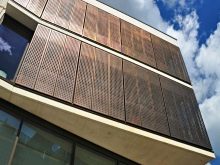
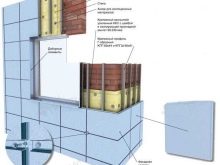
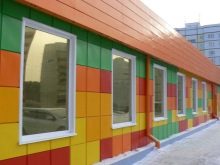
Plaster
A very popular type of decoration, since plaster not only decorates, but also insulates the building, and also allows you to make textured surfaces. The basis for this type of cladding is a variety of lime, gypsum and sand-cement mixtures. The advantages of such a coating include moisture resistance, good sound and heat insulation properties, as well as a low price.
Of the minuses, the likelihood of cracking under the influence of elevated temperatures can be noted.
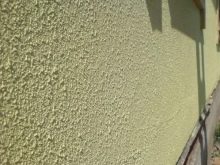
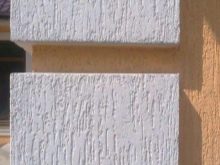
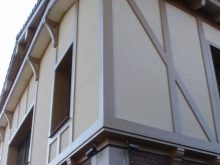
Siding
Another widespread option for decorating the walls of houses. This coating allows you to implement any architectural solutions, and also well protects walls from adverse weather conditions.
The advantages of siding are resistance to the destructive action of external factors., ease of operation, and low cost. This material can be washed if it gets dirty for any reason during use. Of the shortcomings, it is possible to designate the complexity of the installation, there must be gaps between the individual panels, which contributes to the "settling" of insects inside the facade. Well, besides the fact that the siding is quite fragile, it is not resistant to mechanical damage.
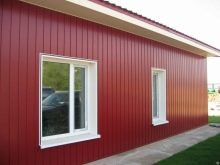
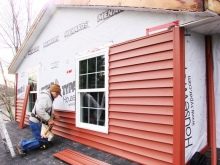

Stone
The stone is very often used for exterior cladding. It is a durable and very attractive material. As a rule, cladding is carried out in solid or selectively. In any case, it is very laborious and costly, but the result exceeds all expectations!
The advantages of natural or artificial stones are high thermal insulation, effective protection of walls from destructive natural factors and mechanical influences, durability and stylish design. There is only one drawback - this is the very high price of both the material itself and the work on its installation.
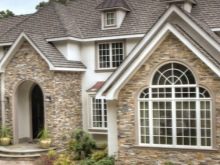
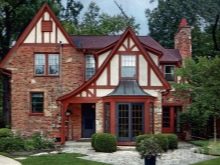
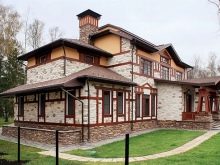
Porcelain stoneware
In recent years, porcelain stoneware has become a very popular finishing material, thanks to which the house is being transformed before our eyes. The general appearance of the facade after cladding becomes noble and expensive, and the presence of a lathing frame prevents deformations due to shrinkage of the house.
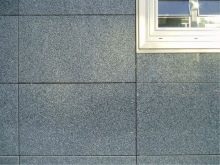

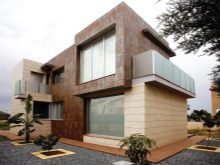
Sandwich panels
Another modern and practical material that provides a building with good thermal insulation. From a technical point of view, this material is 2 metal sheets, which are fastened to each other with a layer of insulation. The strength of the coating is due to pressing, while the outer side of the panel can be decorative or smooth.
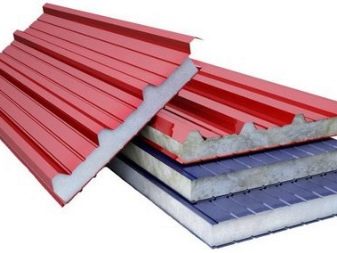
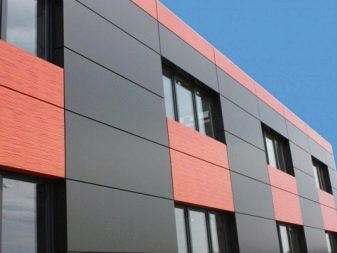
Brick
Let's make a reservation right away that the brick used in decoration and building bricks are not the same thing. The cladding material is produced under high pressure, it does not impede air circulation, exhibits fire resistance and reliably retains heat. The brick-clad house does not need any additional maintenance, and the overall appearance of the building is very attractive. At the same time, there is only one minus - the high cost of the material and work on its installation.
If none of the options came up, then you can use a lining or block house. These natural coatings give houses a lively, but at the same time, sophisticated look, they hide well the defects of the walls, and if properly cared for such coatings, they can last for many years.
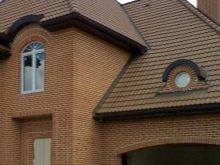
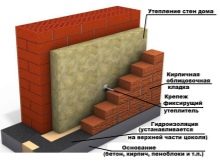

Some consumers prefer DSP or use corrugated board. Some equip a glass or combined facade.
Design
An erected or renovated house with all the necessary amenities still looks unfinished if its external high-quality finishing has not been carried out.
When creating the exterior of a building, you should know what styles of decoration can be used. This will help you to profitably beat all the advantages of the house, show your good taste and attract the interest of neighbors.
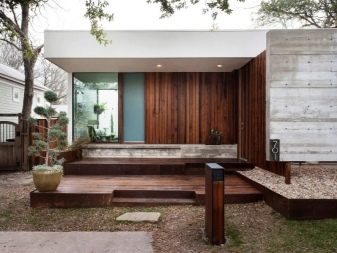

It is important that the building does not stand out from the general row of surrounding houses. Agree, a Gothic castle will look ridiculous against the background of wooden houses. Well, in addition, the decoration must correspond to the natural and climatic conditions, for example, the Greek style with open terraces and an abundance of balconies will not be entirely appropriate in regions with a harsh climate.
The main material used in the decoration will play a decisive role. So, the chalet style is most often based on the use of wood and glass, a combination of wood and natural stone is good for country, but the English decor presupposes an abundance of brick.
Let's consider the most popular types of design and their distinctive characteristics.
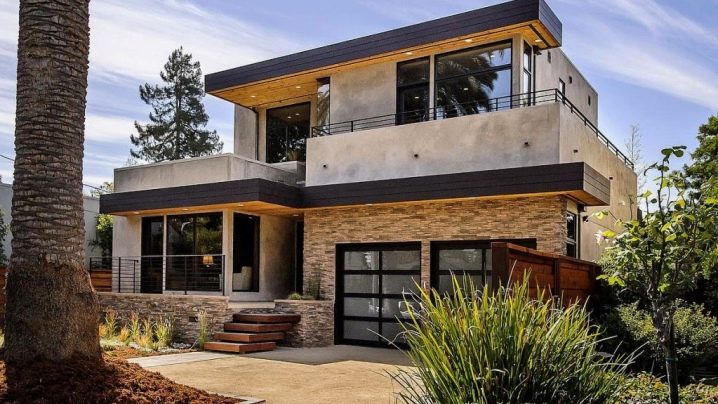
English style
A characteristic feature of this design is laconic restraint, stiffness and the use of expensive finishing materials. As a rule, the exterior is finished with bricks or tiles that imitate a brick surface, the roof is made of metal tiles of restrained shades. Straight two-story buildings are decorated in the English style. The porch is usually small, complemented by small semi-columns. Such houses have an attic, and a small garden is laid out in the backyard.
English buildings are light in design, they are matched by symmetrical cornices and other elements, clear lines and laconic geometry can be traced.
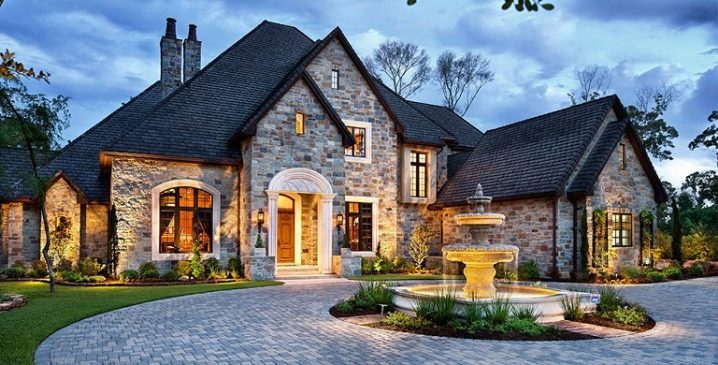
Provence
This is a popular French style, in which white and other light cold tones are most often used. The brick protruding from each wall creates a slight negligence effect.For the most part, natural materials are used: strong stone, practical ceramics or natural wood. Semicircular arches are arranged here, which are combined with rectangular window openings. By the way, the symmetry between the windows is not observed - both large and small openings can be located on the same surface at the same time.
Provence uses a soft flow of tones from one shade of beige to another. Decorative wooden elements are usually painted in ivory. The exterior is additionally decorated with overhead elements and paintings on the side walls. The style is optimal for one-story buildings.
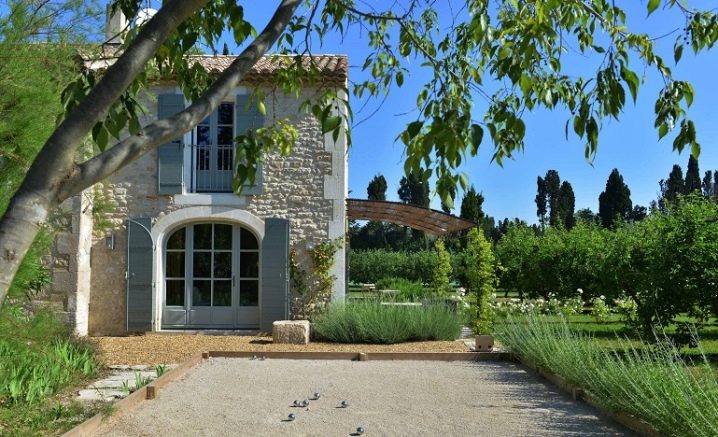
Scandinavian
Scandinavian style literally burst into design and residential architecture a few years ago. In this design, preference is given to wood, and the wood is not painted, but simply shaded and varnished. Paints are used only to create bright accents of scarlet and rich brown tones.
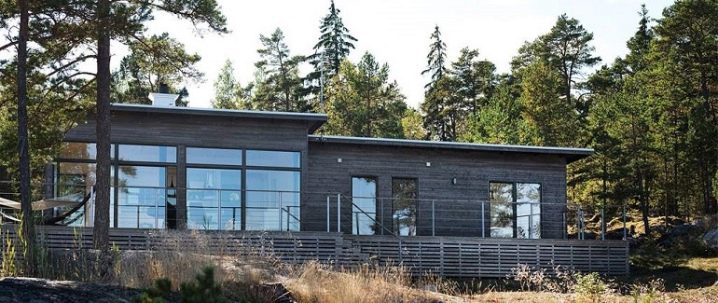
Fachwerk
This trend originates in Germany, where houses are set up as a constructor. Their main motives are considered to be wooden beams placed in all directions. They are painted or varnished brown, while the base material is light beige. The roof in such buildings is covered with tiles of the same tone with beams.
These houses look very aesthetically pleasing and stylish. However, the service life of such beams is short - every 20-25 years it is required to update the facade and replace the beams with new ones.
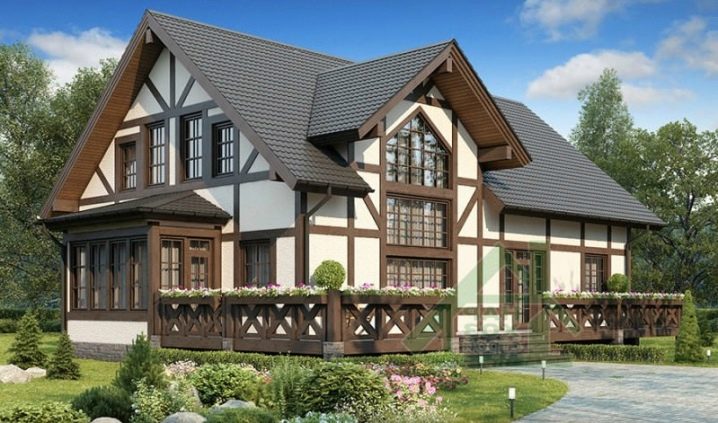
German
Another German version of home decoration, the characteristic features of which are considered to be restraint and conciseness, combined with practicality and comfort. Such houses have clear square or rectangular shapes with arched windows. A required attribute is wooden shutters.
The plinth is finished with stone, the walls are decorated with textured plaster, and the doors are painted in a color that contrasts with the base.
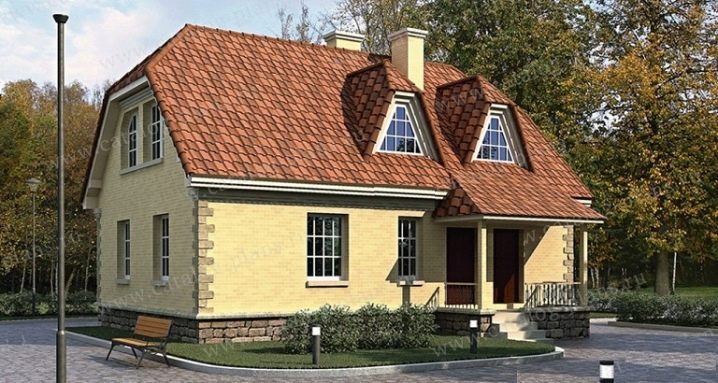
Baroque
Pompous and luxurious style. Such houses resemble palaces - they have massive columns, multi-tiered domes, stucco moldings and huge windows. This option is only suitable for large cottages with original layouts. Baroque exteriors are finished with only the most expensive materials: marble, wood or copper, and the color scheme is dominated by shades of silver and gold, and art painting is often done.

Modern
Modern shocking style, the characteristic features of which are:
- whimsical architectural elements;
- complete absence of any rough details;
- the use of floral and plant ornaments;
- the use of natural wood, stone or brick in decoration;
- discreet color scheme;
- an abundance of stucco molding.
The layout of such houses is asymmetrical, the roof is often two-, three- and even four-pitched and windows to the floor, often in the form of stained-glass windows.
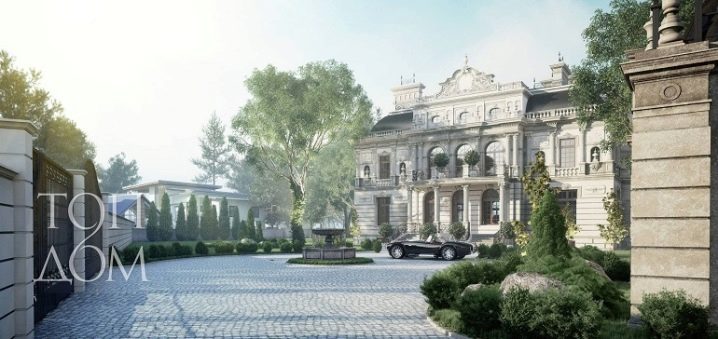
Classic
This is the most common style in facade decoration. It is widespread due to its simplicity and aesthetics. Such houses harmoniously coexist with buildings decorated in any other style, but at the same time retain their individual charm. The main feature is symmetry: windows and doors are of the same size and are located in one line. Semi-columns, balustrades and carvings act as decorative elements, but all without unnecessary pomp and pretentiousness.
Thus, there are only three basic parameters for a competent style selection:
- finishing traditions in a specific area;
- geographic conditions;
- own taste.
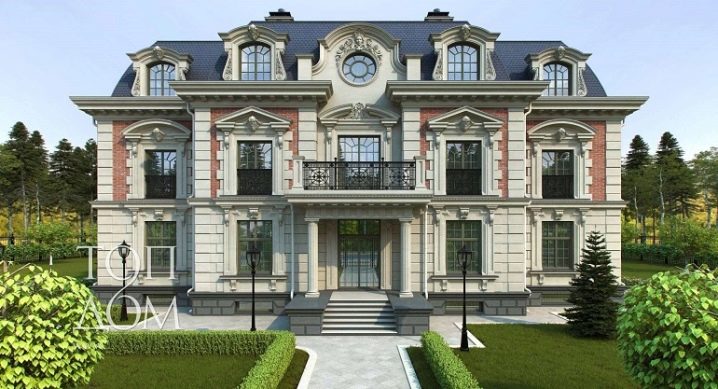
Facades should be equipped based on their capabilities and preferences - only then the house will be conceptual, and its design will give only the best impressions.
Self framing
The houses of your dreams are a concept that is not limited to a competent planning of living quarters and good repair, it is also an aesthetic original appearance.According to the famous architect Koolhaas, any structure exists in two main realities - the first in the head of its creator, and the second in its practical embodiment, and they can never be similar to each other.
Fortunately, these days the construction market offers such a variety of exterior solutions that realities will intersect and the facade will become exactly what the home owners imagine it to be.
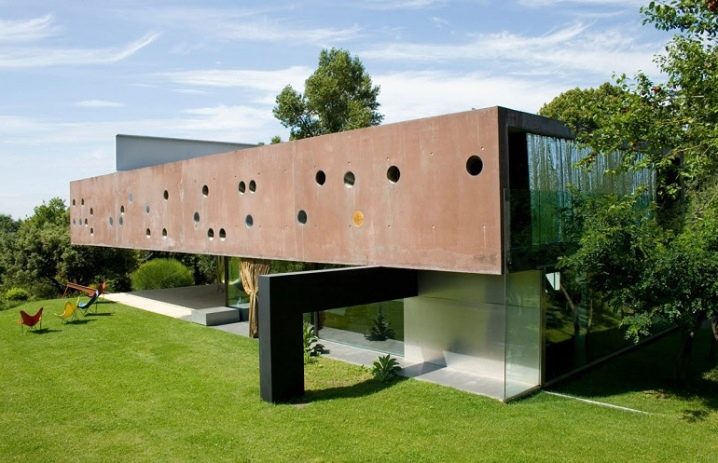
What do you need?
First you need to draft your exterior. Designers advise highlighting such elements that will easily be favorably shaded with high-quality cladding. These can be bay windows or plinths, as well as balconies and terraces. For each of them, you can come up with a variety of types of finishes, which in general give the whole house a bright look.
Of course, you can draw up a project on paper using only your imagination. But it would be more correct to use 3D models. They allow you to create various options for design solutions, discuss them with family and friends and make the final thoughtful choice.
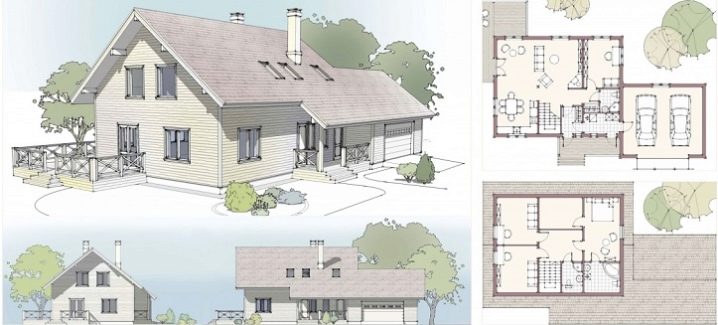
To create such models, as a rule, they turn to professionals who have experience working with basic design programs. Moreover, very often a specialist cannot immediately grasp all the nuances of the customer's wishes, or the latter cannot clearly formulate what exactly he wants to see in the end. Therefore, you should either stock up on patience and time, or prepare for compromises. There is a fee to create each model and it can be quite expensive to simulate all possible options to choose the best one.
To use the program, you just need to set the basic parameters of the house: dimensions, dimensions and height of the location of windows and doors, their number, configuration features, etc. Based on all these data, a 3D model is compiled. Here you can also choose the optimal color scheme for the building itself, as well as doors and gutters.
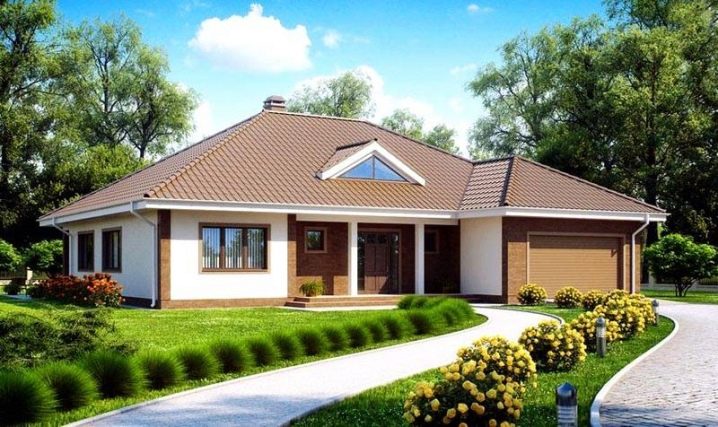
The options you like can be printed out and sent to the work of specialist finishers.
Calculations
The second very important stage in preparation for finishing work is the calculation of the necessary materials.
First, you need to clarify the total coverage area. The required amount of consumables will largely depend on this. The accuracy of the calculations is very important, since the lack of even one single element of the exterior system can delay the arrangement of the facade or change its concept from the planned one.
The formula for the calculations is quite easy - the area of the facade is equal to the sum of the area of the walls and all the gables, reduced by the area of the doors and windows.
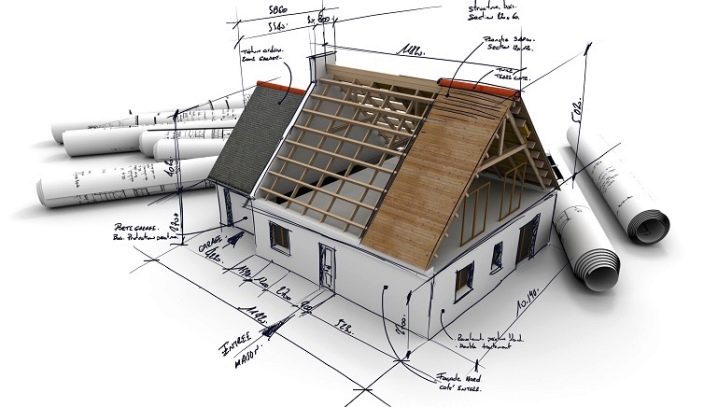
The successive work will be something like this - for a start, you should measure the lengths of all the sides of the building and add them together, getting the total perimeter of the house. It is very convenient to do this if you draw a plan diagram of the house and indicate all the basic dimensions on the drawing. Suppose the structure has a rectangular shape of 6x5, in this case the perimeter will correspond to 22 m. Then the resulting value should be multiplied by the height of the building.
If the structure has gables that require thermal insulation, then you will need to strain your memory and remember the geometry course. The simplest thing will be to determine the area of each triangular pediment, which are located under the same slopes, for this, their width is multiplied by the height of the roof and divided by two. It is not difficult to calculate the area of windows and doors. To do this, the height of each element is multiplied by its width, and then all the results are added.

Special attention should be paid to thermal insulation materials, since insulation is the basic point in the construction of an effective facade. If you neglect these works, the facade will turn out to be beautiful, but short-lived and non-functional.
The type of insulation should be thought over and selected in advance.It will optimally use non-combustible materials with a high degree of environmental safety. These include mineral wool based on basalt fibers. Moreover, the insulation must have a certain density and strength for the separation of layers, only in this case the exterior will serve faithfully for several decades.
To calculate the required thickness of the insulation layer, it is necessary to rely on the natural zone of the region where the structure is located and its basic characteristics. For this, a variety of calculators are freely available, with the help of which you can get recommendations based on the entered parameters (region, types of facade, used material and dimensions of walls).
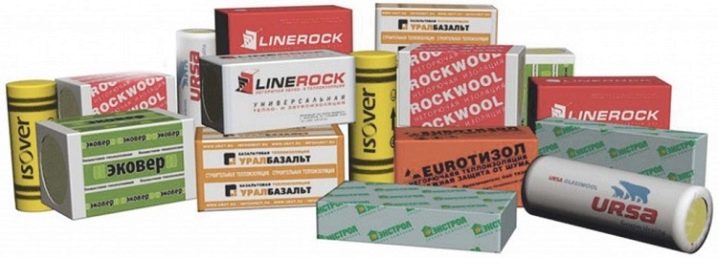
For example, for brick buildings in "2 bricks", that is, 51 cm thick, the required insulation thickness will be:
- in Chelyabinsk - 13 cm;
- in Moscow - 12 cm;
- in Kemerovo - 14 cm;
- in Rostov-on-Don - 9 cm.
Thus, for the regions of Russia, insulation with a layer of 9-14 cm is required, but if the house is being built according to European standards, then the thermal insulation must also be thicker. Of course, this will require additional costs for its arrangement, however, already in the first winter, the costs will pay off due to a tangible reduction in heating costs.
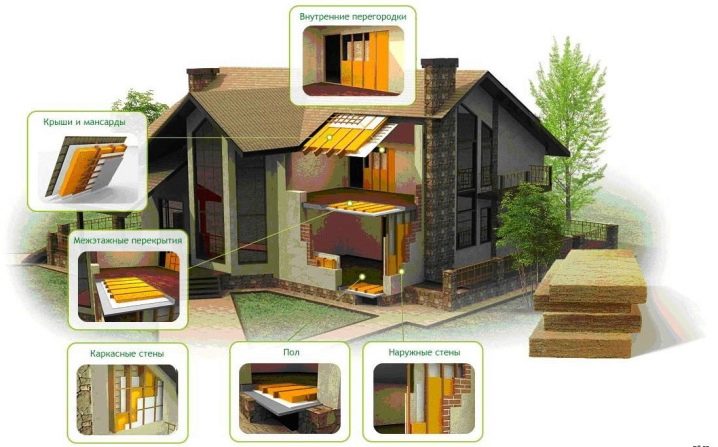
The total amount of materials used is directly related to the types of materials. Therefore, we will consider the most popular ones. The wide assortment of all kinds of panel colors and the ease of their installation have become the reason for the great popularity of the material in the decoration of houses in Russia. A similar technique involves fixing the cladding panels on a special wood or metal frame. At the same time, a small gap is formed between the walls with insulation and the finishing material itself, which is responsible for removing excess condensate to the outside.
The lathing is mounted with a step that is equal to the length of the heat-insulating materials, however, it will still not work to apply 100% mineral wool - the waste will remain, therefore, when purchasing the material, it is necessary to lay down about 10% in reserve, and if the building has a large number of openings, then the margin should be increased to 15%.
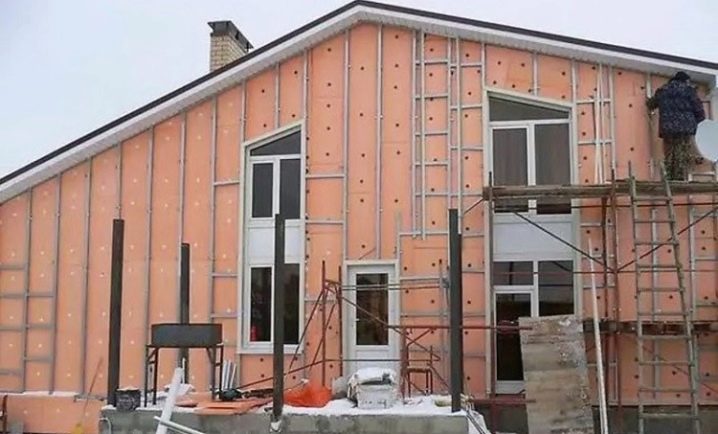
For similar reasons, the siding itself is purchased with a margin, that is, the total area of the material should be 15-20% higher than the total calculated area of \ u200b \ u200bthe facade. But the ventilated windproof film, which is used to protect the insulation layer, is purchased based on the ratio of 1.11 m2 per square meter of area, since this material is overlapped.
The calculation of materials for plastering is done differently. This technology is more complicated and much more expensive, but such a coating looks many times more aesthetically pleasing and gives a kind of European charm. According to this technique, a "pie" is attached to the walls - the insulation boards are glued to the walls with glue, and for greater strength they are fixed with special front anchors. A reinforced mesh is laid on top of it, then there is a layer of primer and, finally, a base topcoat.
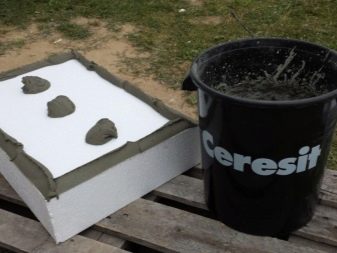

The peculiarity of this technology is that the insulation must be dense, most often foam is used. Therefore, its waste-free application is not possible - the panels are cut near all openings, preventing any joints of the thermal insulation coating from forming at the corners.
The approximate consumption of the basic finishing components will be one square meter:
- glue for insulation boards - 6 kg;
- building plaster - 6 kg;
- front anchor - 7 pcs;
- reinforcing mesh - 1.4 sq. m;
- decorative finishing putty - 3.5 kg;
- soil composition - 0.15 l;
- paint - 0.25 l.
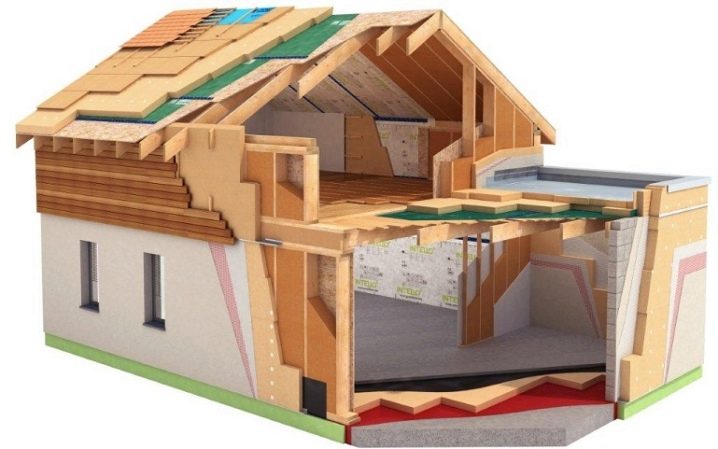
These are approximate figures. More accurate calculations are made based on the technical features of the types of mortars and enamels used. In general, when carrying out facade work around the house, it is necessary to take as a basis not only their cost, but also durability, as well as possible savings by reducing heating costs.
The most budgetary finishing options will require investments in repairs in a few years, and with more expensive materials, you can safely forget about updating the exterior for several decades.
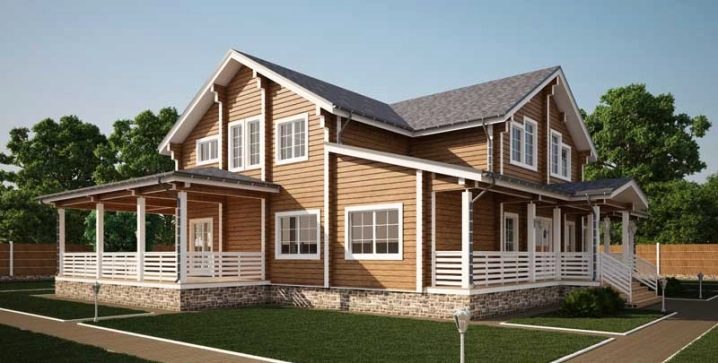
Sequence of work
The method of carrying out work related to arranging the cladding of a house with your own hands is also largely due to the materials used.
For a "wet" exterior, three basic layers will be required.
- Thermal insulation and sealing. The material is attached to the wall with glue. Usually, polymer-cement compositions are suitable for wet facades, which are characterized by excellent adhesion to the surface and all types of insulation.
- Base layer. Forms a solid layer that will protect the insulation from any type of mechanical stress. As a rule, for this purpose, they take reinforced fiberglass meshes impregnated with solutions that protect the coating from the effects of acid-base solutions.
- Finishing decorative coating. In "wet facades" it is most often plaster. It is applied in a traditional way, which is similar to the method of internal plastering of buildings.
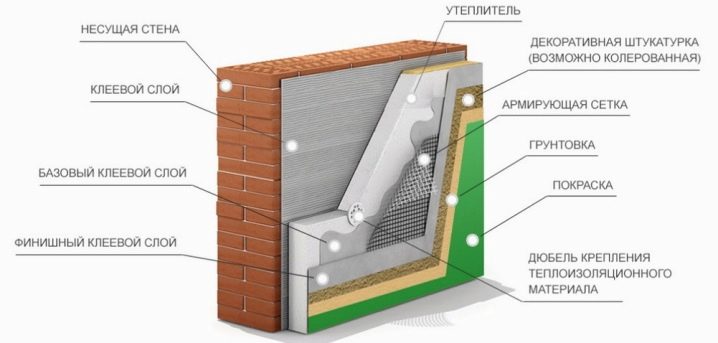
For the effective implementation of all installation work, you need to take care of purchasing the necessary tools and materials:
- heat insulator - the most popular is foam or mineral wool;
- dowels-fungi - at the rate of 5-9 pcs per sq. m cladding;
- fiberglass stack - 1.35 m2 per sq. m of the facade;
- profiles;
- primer;
- directly finishing material.
After the materials are prepared, you can proceed directly to the installation work.
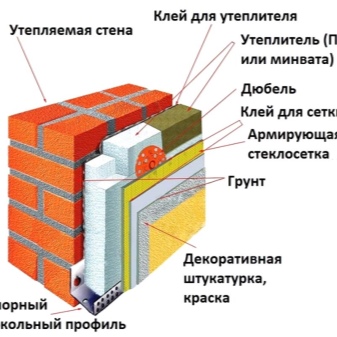

Along the line from which the thermal insulation of the walls begins, it is necessary to carefully beat off the entire horizon and tightly fix the material for finishing the basement. Clean the wall from dust and dirt, then cover with a primer. This is important for improving its adhesion with adhesives, since the more adhesion with the adhesive, the warmer and more favorable the microclimate in the home will be.
Next, a layer of insulation is laid. You can start work from any angle, while glue is applied to 45-50% of the material area. Be sure to smear its edges and the center point of the coating. Three days after the glue finally "grabs", the thermal insulation is additionally fixed with "fungi".
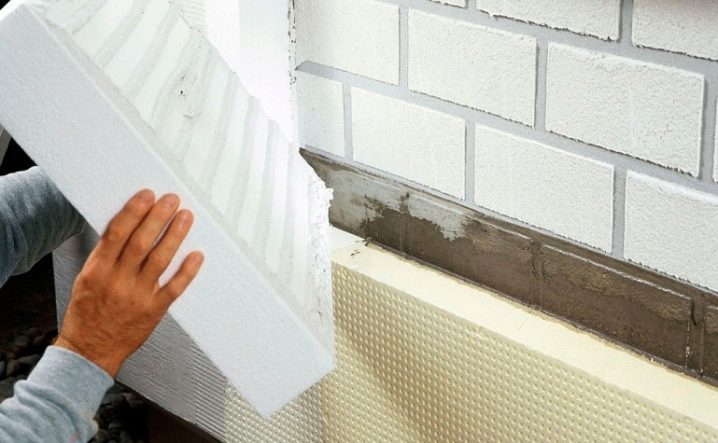
Next, reinforcement is carried out. To do this, glue is again applied to the outer layer of the insulation and a glass cloth mesh is pressed into it with a spatula, then it is also coated with an adhesive solution. Ideally, the mesh should not be visible from the outside. A base plaster is applied to a well-dried surface.
At the finishing stage, the coating is decoratively finished and painted. Experts recommend applying a minimum of two coats using horizontal, vertical and oblique spray motions to ensure a homogeneous coating structure and will determine the effectiveness and attractiveness of the home. Siding installation work is done a little differently.
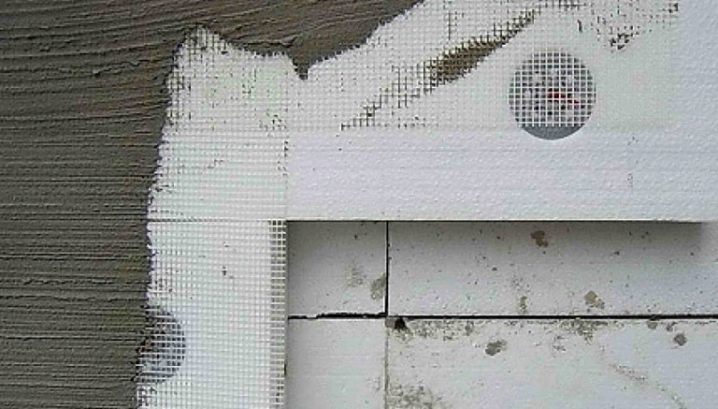
To begin with, it should be noted on the foundation those places in which the frame will be joined to the panels - it is there that you will need to screw in self-tapping screws, which will provide a stronger connection. It is very important to ensure that the panels are positioned with a small clearance from the ground level.
In addition to the standard installation of panels, it makes sense to use the finishing and starting profiles, this will make the structure more stable, since the panels will reliably adhere to the foundation and to each other.
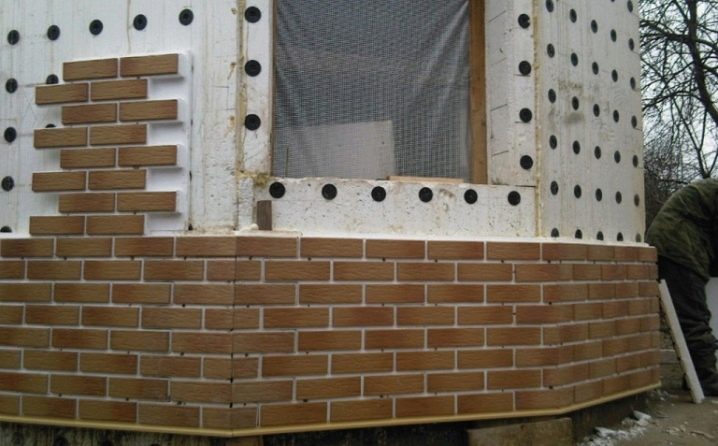
The panels are mounted from bottom to top. It is very important to pay special attention to the corners of the openings - plastic corners are used for their design, which must be adjusted in length, and then fixed on the frame with special screws.
Tip: siding must be done stress-free, the material must be laid naturally, in no case deform, not bend or stretch.The panels cannot be fastened tightly to each other; small gaps should always be left - this will protect the material from deformation during thermal expansion of the materials. After installing every fifth row, check the evenness and correctness of fixation using a level.
Work can be carried out both in summer and in winter, however, cutting of elements is carried out only at temperatures above -10 degrees. If it is lower, then it is better to do the formation of blanks indoors.

Helpful tips from the pros
Regardless of what finishing material and type of cladding you prefer, you should first prepare the walls well. This is the main guarantee of the success of equipment for an effective and stylish coating. The walls are cleaned with the use of special detergents with acid and alkaline components: the former will qualitatively get rid of the remnants of salts and paint, and the latter - from bio-dirt.
The final choice of finishing coat should be based on personal preference and the overall stylistic concept of indoor and outdoor decor.
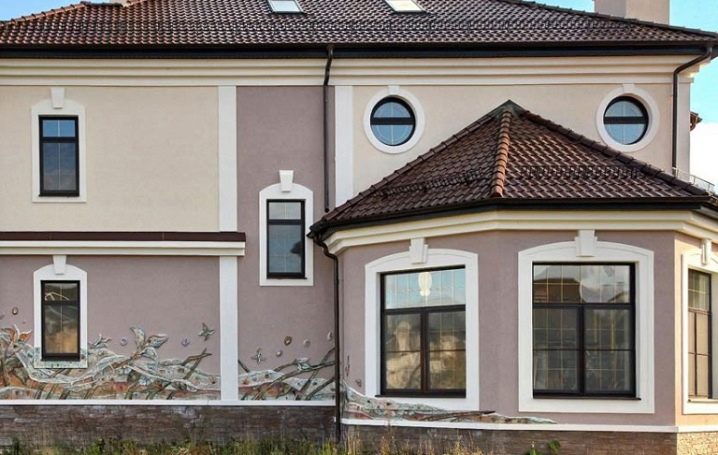
Experts note that the creation of a noble and slightly aristocratic look of the house is possible with the use of natural stone. Its artificial counterpart will be cheaper, but less stylish.
The most common finishing materials are clinker and brick, and the most popular are options using sandwich panels.
The exterior can be made from a wide variety of materials, each of which has its own pros and cons, however, it is worthwhile to calculate the overall level of costs in advance, and also to think about whether such cladding is suitable specifically for your home. Subject to all the technological features of the installation of facades, they will delight home owners for many years with their decorative design and high performance characteristics.
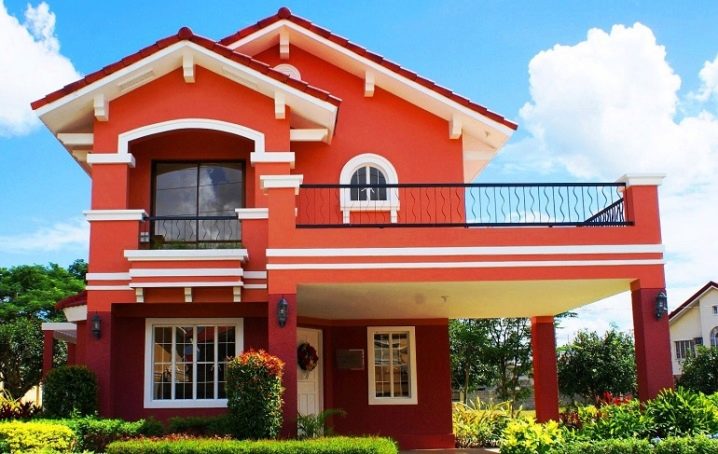
Spectacular examples for inspiration
- The most common design options for facades are the classic style.


- Houses in the English style look prim and sophisticated.
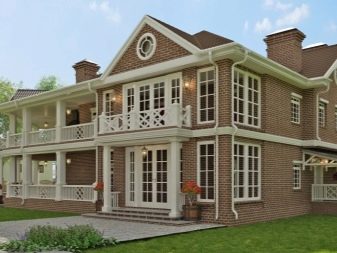
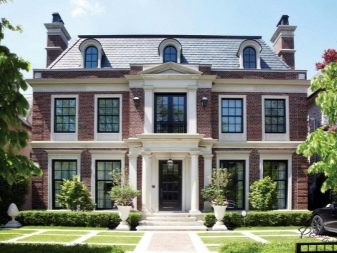
- A touch of rustic, but at the same time refined romance will bring the device of the facade in the Provence style.
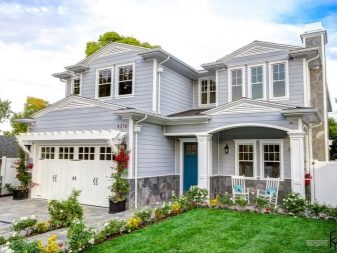

- The buildings in the German style look stylish.

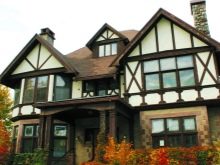
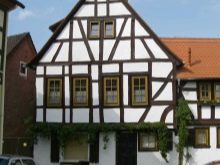
- The Japanese theme will invariably attract the attention of others.
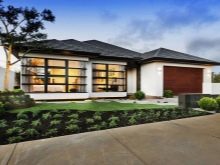
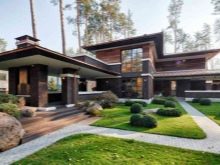
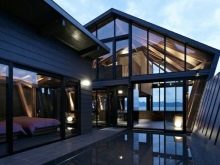
In the next video, you will be warming the facade of a house made of aerated concrete with mineral wool for glue.













The comment was sent successfully.